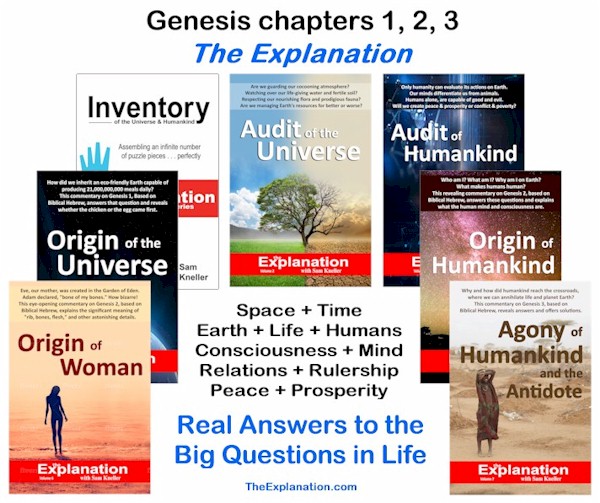Contents
Animal bodies can come with or without every single organ. No heart, blood, or a brain. And even with no other ‘vital’ organs at all.

Animal Bodies all shapes, sizes, forms and characteristics. They can come with or without every single organ. No heart, blood, or a brain. And even with no other ‘vital’ organs at all.
Both our human bodies and the animal bodies that we saw in Chapter 8 are an amazing result of chemical processes that lead to the makeup of some 7.8 million species in the animal kingdom. Most of these are insects. Animal bodies come in all shapes, sizes, and forms.
(chapter 10.4)
Incredibly, they can also come with or without every single organ. Jellyfish don’t have a heart, blood, or a brain, and they don’t have any other organs, either. We talk about a frog, a worm, and a human heart. All three function in a different way, even though the end result is always to pump blood.
Animals exist with or without every single organ. Jellyfish don’t have a heart, blood, or a brain, and or any other organs, either. Share on XOn the other hand, certain worms don’t have a heart. Their body movement is sufficient to circulate their blood. Even though man’s body is a masterpiece, it generally comes up short in comparison with the animals’.
|
Human Bodies
|
|
BrainsElephants have a bigger brain than humans, weighing in at 4.662 grams. That’s 0.22 percent of their total body weight. A dolphin’s brain weight is similar to man’s at 1,500 grams, or about 2.5 percent of its total body weight. No BrainsIf we consider the brain to be a central system for controlling the functions of the body and mind, we can count the groups of neurons (ganglia) present in oysters as brains, each performing separate functions such as eating and moving. |
Man has a smaller brain than the biggest animals at only 1,500 grams, and it represents 2.2 percent of his total body weight. |
EyesEyes are not essential for certain blind ants and worms. Some fish, seafood, and beetles have no eyes. Pupils don’t always have the same round shape within the eye. Cats have vertically slanted pupils and goats’ are slanted horizontally. Cats have a reflective layer behind the retina, which sends part of the light back into the eye and gives them far superior night vision than man has. Bats have eyes for another specialized purpose. They are poorly developed for sight, but they use sonar and echolocation to find their way about. However, when there’s nothing to bounce the guiding waves back to the bats’ oversize ear antennas (which can happen during long distance migration), their eyes have the ability to take over the task of navigation. |
Humans have a blind spot where the optic nerve passes through the retina. In octopus eyes the optic nerve routes around and behind the retina. |
LungsThe Bar-headed goose migrates across the Himalayas. These birds have reached altitudes of 7,200 meters. Mount Everest is 8,850 meters high, and aircraft fly at an altitude of 9,100 meters. Considering the added oxygen supply needed for flight and the one-day crossing time, this is one of nature’s grandest feats. The hadal snailfish swims and breathes at a depth of eight kilometers (five miles) in the Japan Trench of the Pacific Ocean. Tuna swim at a steady rate of fourteen kilometers per hour. They never stop moving until they die. The water has to be moving so that they can breathe. Other breathing organisms don’t even use oxygen. Bacteria located 400 meters beneath a glacier can “breathe” iron. Shewanella bacteria found in the soil around nuclear disposal sites can “breathe in” toxic waste and “breathe out” hematite. They can exist with or without oxygen. |
Man is best suited for living at sea level, where oxygen binds best with his red blood cells to fuel the body. |
StomachIn the wild, food has basically no preparation. It’s hunt, catch, and down the hatch. “Eat and go, go and eat.” Cows have four stomachs and can digest fiber, which man cannot do. Many animals gobble down the whole bodies of their prey, including bones, organs, tough skin, etc. |
Man generally must prepare his food by cleaning and cooking. He needs fire and time. Man can and does eat raw foods, but his diet generally involves cooked food. Fiber is needed as roughage to cleanse the colon, but it is not digested. |
MusclesA caterpillar has 4,000 muscles total, with 248 muscles in its head alone. An elephant’s trunk has 40,000 muscles. Ants can lift twenty times their body weight. |
Man has 650 to 800 muscles in his body. He has forty-two facial muscles. |
Animal Bodies versus Human Bodies. Who’s the winner? Well, really, no one is. When you get down to it each creature has the best body needed to perform in whatever environment it is, doing what it does best.
This post is an excerpt from chapter 10.4 of Inventory of the Universe.
The Explanation Blog Bonus
This video is about animal eyes … and the various types of visions … split eyes, compound eyes, rock eyes … yes, eyes made of rock that can see images, marvel at the fascinating eyes in animal bodies.
And now we take a closer look at animal noses. Think about how specialized and unique these noses are. They are not in any way, shape or form like yours and mine.
Dig Deeper into The Explanation
Online Study Courses to Uncover the Mystery of Adam and Eve’s Nakedness… with no fuss. Free video mini-course revealing the God-intended meaning of Scripture via Biblical Hebrew. It’s so easy, it’ll blow you away. Join now and add new motivation to your Bible study.
Join The Explanation Newsletter to stay informed of updates. and future events. No obligations, total privacy, unsubscribe anytime, if you want.
The Explanation series of seven books. Free to read online or purchase these valuable commentaries on Genesis 1-3 from your favorite book outlet. E-book and paperback formats are available. Use this link to see the details of each book and buy from your favorite store.

Since you read all the way to here… you liked it. Please use the Social Network links just below to share this information from The Explanation, Animal Bodies, Abundant & Exquisite Shapes, Sizes, and Forms



Let’s Connect!